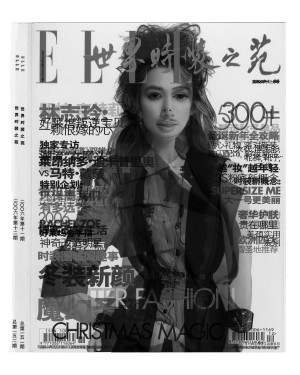Taipei Biennial 2012: Modern Monster/Death and Life of Fiction.
29.09.201213.01.2013
Curator: Anselm Franke
Exhibition Theme:
In today’s narrative resembling a fictional hole, there exists a deep imprint of the modern monster. As our views on modernity and the writing of the modern narrative are reshaped, a comprehensive crossover project is thus constructed. The theme of the Taipei Biennial 2012 departs from the crisis of the imagination within the global capitalist culture: the need for collectively shared horizons that withstand the clichés of modernist development, and the logic of division haunting nationalist and identity politics in the long shadows of colonialism and imperialism.
The theme of the Taipei Biennial 2012, Modern Monster/Death and Life of Fiction, places emphasis on the writing of history and the connections with fictional events and things. “Fiction” fills the blind spots of history writing and documentation, because it deals with the dark side of modernity, its dialectical contradictions, and the deeply hidden terrifying matters within the liberating promises of modernity.
The Taipei Biennial 2012 draws upon a recent study titled The Monster That is History by Taiwanese literature historian David Der Wei Wang, with its theme based on the aesthetics of monstrosity. The figure of the monster is a fictive creation, an image of the intermediate state, a characterization of a reflective mirror, which reflects the relationship between nonfiction and fictional existences. Wang invokes the ancient Chinese monster Taowu that acts as an objective correlative to the human account of past experiences. The monster Taowu, furthermore, is identified particularly for its vicious ability to foresee and undermine human intentions, because it manifests the present as an image between future and past. The reflection in The Monster That is History is critical to the Taipei Biennial, which is that modernity’s historical position is no longer deep-rooted and our relationship with the contemporary modernity is changed, as it is no longer assumed that in order to progress one must continue to turn from and break away from tradition.
The Taipei Biennial 2012 will look at the aesthetic economy of monstrosity; the way the monster acts as symptomatic mirror, a liminal figure in every sense, and employs it as the point of departure for an interrogation into the role of fiction in relation to the dialectics and the monstrosity of modern history. The exhibition Death and Life of FIction departs from a primal scene of Chinese modern literature: In 1906, Lu Xun (1881–1936), then a student of Western medicine in Japan, saw a slide show in Japan, in which a Chinese crowd idly watched as one of their compatriots was beheaded for spying on the Japanese army in the Russo-Japanese war. Dumbfounded by this scene of decapitation, Lu Xun, who was to become the author of the Diary of a Madman and The True Story of Ah Q., realized that before saving Chinese people’s bodies, he had first to save their souls; hence, before practicing ordinary medicine, he had first to cure the spirit of China with the medicine of literature. A slide show of decapitation triggered this crucial moment in Lu Xun’s life, and thereby the direction of modern Chinese literature, its accounts of a world born of terror and violence, whose aspired rationality so often played out as systemic irrationality. It also poses a key question that underlines all discussions of modernity, namely the relation between the role of ideas, or the mental and spiritual, and the role of structure, or the systemic and mechanic dimensions of modernity.
Exhibition Structure:
Thus far this year’s biennial intends to feature over 40 artists or artist collectives, which includes 9 Taiwanese contemporary artists, and with over 40 proposals of artistic project. About one-third of them are conceived specifically for this exhibition. one of the major projects included in this biennial will take the form of a series of Mini-Museums to be organized by various co-curators and artists. It is anticipated that the Taipei Biennial 2012 will eventually garner contributions from over 70 artists or collectives, and will be exhibited on the first three floors of the Taipei Fine Arts Museum and also an external venue at the Shilin Paper Mill.
In total there will be six Mini-Museums presented for the Taipei Biennial 2012, and they are:
- Museum of Rhythm
- The Museum of Ante-Memorials
- The Museum of the Monster That Is History
- The Museum of Gourd
- The Museum of the Infrastructural Unconsciousness and The Museum of
- Crossings.
Six curators or groups have been invited by Anselm Franke to organize each of these distinct spaces, which feature the participations of some 20 artists with three artists from Taiwan. Anselm Franke is also the co-curator for two of these Mini-Museums.
While the Mini-Museums are self-contained spaces based on specific themes, they also influence the registers and contextual readings of the works in the exhibition surrounding them. In each “mini-museum”, the relationship between works of art and documents serves as the backdrop for an interrogation of ambiguities of writing history. They are conceived as models of possible histories and narratives hidden in the interstices of official accounts. Their primary goal is to question the relation between the systemic conditions of the present and our situated-ness in a historical imaginary.


